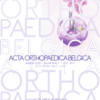Solving the enigma of posterolateral tibial plateau fractures, the clue protocol
Tibial plateau fractures ; postero-lateral column ; protocol
Published online: Jun 15 2021
Abstract
The study aim is to evaluate functional and radio- logical outcomes following a suggested protocol based on the four-column classification for management of posterolateral column tibial plateau fractures.
A prospective cohort study was performed in level I academic center on 42 patients with mean age of 36 years (22-59). Eleven patients had isolated posterolateral column fractures whereas 31 patients had associated columns fractures. According to the suggested protocol, all cases of isolated posterolateral column fracture started treatment via arthroscopic evaluation of soft tissue injuries (menisci and liga- ments), arthroscopically assisted reduction and inter- nal fixation by rafting screws followed by ORIF if plating was needed. If associated with other columns fractures, columns were fixed sequentially in an anti-clockwise direction starting from anteromedial column.
Average follow up was 26 months. Mean time to union was 16.3 (12-22) weeks. No radiological evidence of loss of coronal or sagittal alignment was detected at final follow up. Five patients had an average depression of 5 millimeters that did not need further intervention at this short-term follow up. Mean KOOS was 81 (72- 88). The average knee range of motion was (0° - 127°). One patient had temporary common peroneal nerve injury, one patient had deep infection and two had superficial wound infection.
implementing the suggested protocol gives good to excellent radiological and functional results as regard posterolateral tibial plateau fracture. A larger study group with longer follow up is needed.
